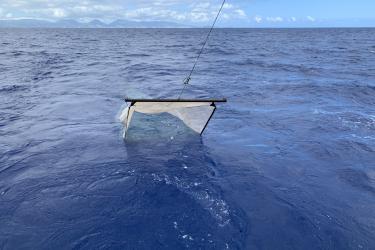We feel honored to work at Pearl and Hermes Atoll, or Holoikauaua, in the Northwestern Hawaiian Islands. We have seen it in many different lights, from sunrise to sunset, at still moments when the water surface was like glass, and times when the wind was blowing at 25 knots, kicking up white caps that made transiting in the small boats a bouncy ride. It's hard to put into words how special a place this is and the impact it can have on you. This is definitely a powerful place, full of unique wildlife.

As we wrap up marine debris operations these last few days, we feel a sense of urgency. There's no way we can cover the entire atoll in the short 10 days that we've been here, to find every derelict fishing net, and we know there are nets unseen that we will have to leave behind. This is such a large atoll, and we've only been able to survey a small portion of the reef (2.22 km2). It's been sobering to see how much trash is floating around and how many nets get snagged on the reef, just in the areas that we surveyed.

One of the most visible, immediate effects of marine debris that we have seen is the impact on wildlife. Yesterday, we freed a turtle who swam into one of the derelict fishing nets, twisting it tighter and tighter around its neck. Cutting it free was an amazing moment, but it also makes you wonder how many turtles are trapped that we can't get to? We also saw a brown booby bird mistake a piece of fishing line for a fish, another sad reminder of the detrimental effects of marine debris.


As we pull away from this massive, wild place with over 52,000 pounds of derelict fishing net, all we can do is hope that we can return soon enough to make more of an impact. In the meantime, we will educate as many people as we can about destructive impacts of marine debris.
Meet the Blogger




